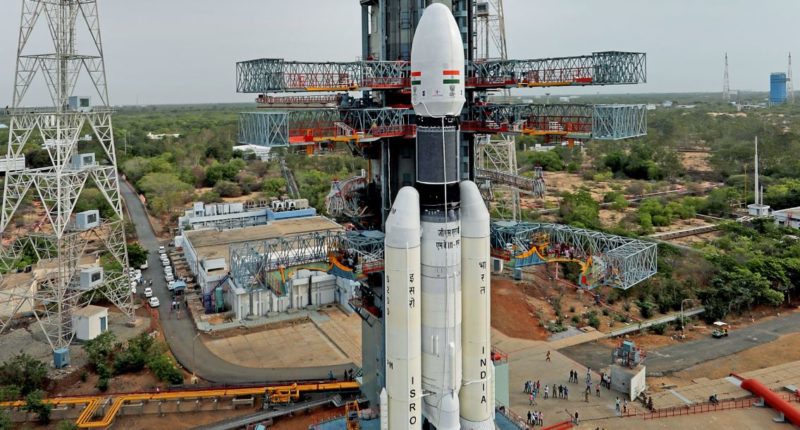After a couple of delays caused due to technical glitches, India’s maverick space agency, the ISRO, has today successfully launched its second mission to moon. Christened the ‘Chandrayaan – 2’, the mission aims to achieve what no other nation has achieved, soft land on the ‘dark side’ of the moon (south pole) and push out a robotic rover that will conduct on ground experiments.
The mission was launched aboard India’s heaviest rocket, the GSLV Mark III. ISRO’s lander and orbiter strategy will be the same as the one with their successful Mars mission. The orbiter and lander combine will use a slingshot across earth, enough to reach earth’s escape velocity. Once achieved, it will be thrown out of the orbit to enter into Moon’s orbit. The method, though time-taking, results in huge fuel and cost savings for the agency.
Chandrayaan-2 will remain in Earth’s elliptical orbit for close to 22 days, during which 5 orbit raising maneuvers will be performed to execute the slingshot method we talked of earlier. Thereafter, the lunarcraft will be moved into trans lunar injection on Day 23, thus setting it for its journey to earth’s closest neighbor. On the 43th day after the launch, lander ‘Vikram’ housing rover ‘Pragyan’ will get separated from the orbiter. Vikram needs to go around Moon in a 30km x 100km orbit before initiating deboosting procedures on Day 44.
On the 48th day, we will witness, in ISRO Chief K Sivan’s words “the most terrifying” 15 minutes of perhaps any mission that India has attempted. These 15 minutes will see the Vikram lander descend to the lunar surface from an altitude of just 30kms. If successful, the lander will soft land on the moon, without damaging its overall structure. This landing would also make India the fourth nation to successfully land on the moon. India will also be the first nation to land on the South pole or the “dark side” of the moon.
Four hours post successful landing, the rover ‘Pragyan’ will come out of Vikram. The rover is expected to function for 1 lunar day (14 earth days) and move 500 metres in that duration. The speed you ask ? One centimetre per second. It will take images and analyse content on the lunar surface and send back data via Vikram or the orbiter to Earth within 15 minutes.
While Vikram and Pragyan will last for a lunar day, the orbiter will continue to circle around Moon for over a year during which it will also map Moon and take images of different areas to look for water. A passive payload of Nasa, Laser Retroreflector Array, attached to Vikram will calculate the distance between the Earth and Moon and help detect the exact location of the lander on Moon. Chandrayaan-2 is loaded with 13 payloads that will do a detailed study of topography, seismography, mineral identification and distribution, surface chemical composition, thermo-physical characteristics of top soil and composition of the tenuous lunar atmosphere for a new understanding of the origin and evolution of Moon.
What is important to note here, is the fact that it was India’s first moon Mission, the Chandrayaan 1 — just an orbiter back then — which helped humans establish the presence of water on the lunar surface.
#GSLVMkIII-M1 successfully injects #Chandrayaan2 spacecraft into Earth Orbit
Here's the view of #Chandrayaan2 separation#ISRO pic.twitter.com/GG3oDIxduG— ISRO (@isro) July 22, 2019
And there is every chance, that India’s Chandrayaan-2 will be successful. The country after all, became the first to send a mission around Mars at first attempt. The mission, despite being extensively complex, was done at a shoe string budget of $76 Million. Chandrayaan 1, the first moon mission by India, was also the one to discover water on the lunar surface.
Here’s the launch video:
Launch of Chandrayaan 2 by GSLV MkIII-M1 Vehicle https://t.co/P93BGn4wvT
— ISRO (@isro) July 22, 2019
Why the south polar region you ask ? Well, for one, it lies completely unexplored and humans have no idea on what goes on, on that side. Second, Through this effort, ISRO aims to derive insights and experiences that will bring about a paradigm shift in how lunar expeditions are approached for years to come — propelling further voyages into the farthest frontiers.





